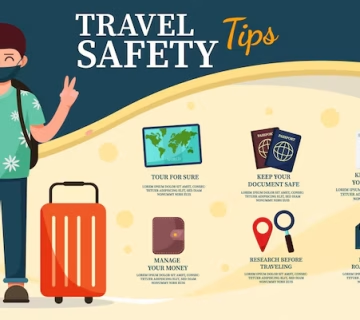Traveling to Ethiopia is an adventure like no other—whether you’re trekking in the Simien Mountains, exploring the rock-hewn churches of Lalibela, or experiencing the vibrant tribal cultures of the Omo Valley. Packing smart can make your trip smoother, safer, and more enjoyable. This guide covers the essentials to bring and the items best left behind when preparing for your trip to Ethiopia.
✅ What to Bring
1. Clothing
- Lightweight Layers: Ethiopia’s climate varies by region and altitude. Pack breathable clothes for the lowlands and warmer layers for the highlands.
- Modest Attire: Out of respect for local culture, especially around religious sites, women should bring long skirts/pants and scarves, while men should avoid sleeveless shirts.
- Comfortable Walking Shoes: Essential for exploring towns, trekking routes, and historic sites.
- Rain Jacket: Particularly if traveling during the rainy season (June–September).
2. Travel Essentials
- Valid Passport & Visa Documents: Ensure your passport is valid for at least 6 months beyond your travel dates.
- Reusable Water Bottle & Purification Tablets: Tap water isn’t safe to drink; these will help reduce reliance on plastic bottles.
- Travel Insurance: Highly recommended for medical emergencies, trip changes, or adventure activities.
3. Health & Safety
- First Aid Kit: Include bandages, pain relievers, antiseptic wipes, and any personal medications.
- Mosquito Repellent & Malaria Prophylaxis: Necessary for lowland regions like Omo Valley and Lake Tana.
- Sunscreen & Sunglasses: High altitudes mean strong sun exposure.
4. Electronics
- Universal Power Adapter: Ethiopia uses Type C, E, and F plugs (220V).
- Portable Charger/Power Bank: Power outages are common in rural areas.
- Camera with Extra Memory Cards: Ethiopia’s landscapes and cultures are incredibly photogenic.
5. Cultural & Practical Extras
- Notebook or Travel Journal: To capture your experiences.
- Small Gifts for Locals: Pens, notebooks, or postcards are more appropriate than money when visiting tribal villages.
- Light Scarf or Shawl: Useful for sun protection, warmth, or covering up at religious sites.
❌ What to Leave Behind
- Revealing or Inappropriate Clothing
Ethiopia is generally conservative, so avoid short shorts, crop tops, and sleeveless outfits. - Expensive Jewelry & Valuables
These may attract unwanted attention and aren’t practical for rural or rugged travel. - Large Sums of Cash
ATMs are available in cities. Carry small bills for markets and tipping, but avoid carrying excessive cash. - Heavy Luggage
Roads in remote areas can be rough. Pack light and opt for a sturdy backpack or duffel bag instead of large suitcases. - Drone (Without Permit)
Bringing a drone without proper authorization can lead to confiscation at the airport.
🌍 Final Thoughts
Packing for Ethiopia is about balancing comfort, respect for local culture, and preparedness for diverse environments. Bring essentials that keep you safe, comfortable, and connected—but travel light enough to move freely across the country’s breathtaking landscapes. Remember: less is more, and thoughtful packing allows you to focus on what matters most—immersing yourself in Ethiopia’s history, culture, and natural wonders.

 then 'Add to home screen'
then 'Add to home screen' then 'Add to home screen'
then 'Add to home screen'



